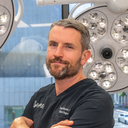Posted underBreast Reconstruction q&a
Can I use my own tissue to make my left breast bigger? It's smaller due to lumpectomy and radiation 1st stage cancer.
I would like to use my own tissue to make left breast bigger and fat fillers for fullness to both breast. Don't want breast lift and want them to hang natural.
Answers (7)
From board-certified doctors and trusted medical professionals
Dr. Frederic H. Corbin, MD (license restricted)
Board Certified Plastic Surgeon
Answer
Dr. Joshua T. Tieman, MD - Account Suspended
Board Certified Plastic Surgeon
Answer
More Breast Reconstruction Questions
See all Breast Reconstruction Q&AWE SEND PRETTY
EMAILS
What’s trending? Who’s turning heads? Which TikTok myths need busting? We’ve got you. No fluff, no gatekeeping—just real talk. Get our free, unfiltered newsletter.



